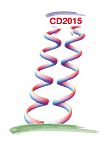Speaker
Haiyan Gao
(Duke University, Durham)
Description
An important goal in modern nuclear physics is to understand how one can describe the structure of nuclei and nuclear forces from first principles of quantum chromodynamics (QCD), the fundamental theory describing the strong interaction. Few-nucleon systems provide important testing grounds for state-of-the-art few-body calculations, calculations based on effective field theories, and more recently predictions from lattice QCD. As such they are important laboratories to investigate nucleon-nucleon interaction and nuclear forces, and connect them to QCD. With the availability of high-intensity, near monochromatic, highly (linearly or circularly) polarized gamma rays from The High Intensity Gamma ray Source (HIγS) facility at the Duke University Free Electron Laser Laboratory, new few-body experiments utilizing these unique features of the beam and polarized targets have been carried out or are underway. In this talk, I will discuss these experiments and present latest results on few-body physics from HIγS.

